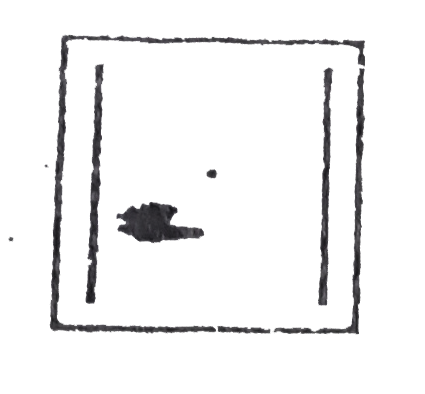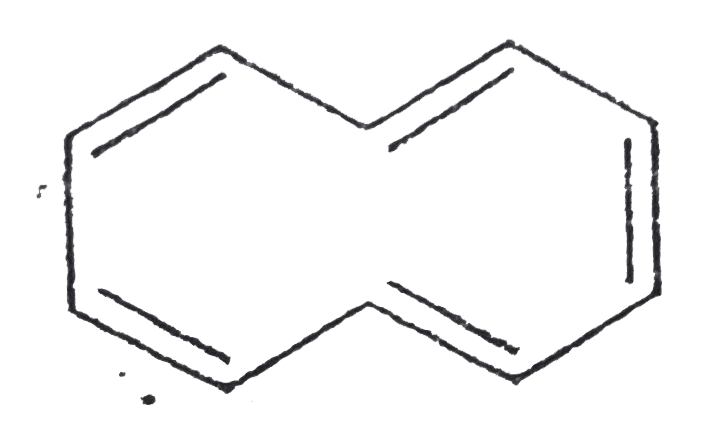Benzene ring has alternate single and double bonds, yet all the C−C bonds are of equal lengths. Why?
To understand why all the C-C bonds in a benzene ring are of equal lengths despite the presence of alternating single and double bonds, we can follow these steps:
Step 1: Draw the Structure of Benzene
Benzene (C6H6) has a hexagonal structure consisting of six carbon atoms connected in a ring. In its simplest form, it can be represented with alternating single and double bonds:
C1=C2||C6−C3||C5=C4
Step 2: Identify the Bond Types
In the above structure, we have:
- C1-C2 and C4-C5 as double bonds.
- C2-C3, C3-C4, C5-C6, and C6-C1 as single bonds.
Step 3: Understand Resonance
The concept of resonance is crucial in explaining the equal bond lengths in benzene. Resonance occurs when the actual structure of a molecule cannot be represented by a single Lewis structure. Instead, it is a hybrid of multiple structures.
Step 4: Draw Resonance Structures
We can draw several resonance structures by shifting the position of the double bonds. For example:
1. Move the double bond from C1-C2 to C2-C3.
2. Move the double bond from C4-C5 to C5-C6.
3. Move the double bond from C6-C1 to C1-C2.
This results in various structures, all of which are equivalent in terms of energy and stability.
Step 5: Delocalization of Electrons
In benzene, the pi electrons from the double bonds are not localized between specific carbon atoms. Instead, they are delocalized across all six carbon atoms. This delocalization leads to a stabilization of the molecule and results in all C-C bonds being of equal length.
Step 6: Conclusion
Due to resonance and the delocalization of pi electrons, all C-C bonds in benzene are of equal length, approximately 1.39 Å, which is between the typical lengths of single (1.54 Å) and double (1.34 Å) carbon-carbon bonds.
Summary
In summary, the equal bond lengths in benzene arise from resonance, where the pi bonds are delocalized over all six carbon atoms, leading to a stable structure with uniform bond lengths.
---
Benzene (C6H6) has a hexagonal structure consisting of six carbon atoms connected in a ring. In its simplest form, it can be represented with alternating single and double bonds:
In the above structure, we have:
- C1-C2 and C4-C5 as double bonds.
- C2-C3, C3-C4, C5-C6, and C6-C1 as single bonds.
The concept of resonance is crucial in explaining the equal bond lengths in benzene. Resonance occurs when the actual structure of a molecule cannot be represented by a single Lewis structure. Instead, it is a hybrid of multiple structures.
We can draw several resonance structures by shifting the position of the double bonds. For example:
1. Move the double bond from C1-C2 to C2-C3.
2. Move the double bond from C4-C5 to C5-C6.
3. Move the double bond from C6-C1 to C1-C2.
In benzene, the pi electrons from the double bonds are not localized between specific carbon atoms. Instead, they are delocalized across all six carbon atoms. This delocalization leads to a stabilization of the molecule and results in all C-C bonds being of equal length.
Due to resonance and the delocalization of pi electrons, all C-C bonds in benzene are of equal length, approximately 1.39 Å, which is between the typical lengths of single (1.54 Å) and double (1.34 Å) carbon-carbon bonds.
In summary, the equal bond lengths in benzene arise from resonance, where the pi bonds are delocalized over all six carbon atoms, leading to a stable structure with uniform bond lengths.
Topper's Solved these Questions
- CHEMICAL BONDING AND MOLECULAR STRUCTUREBOOK - MODERN PUBLICATIONCHAPTER - CHEMICAL BONDING AND MOLECULAR STRUCTUREEXERCISE - Conceptual Questions (3)
13 Videos
- CHEMICAL BONDING AND MOLECULAR STRUCTUREBOOK - MODERN PUBLICATIONCHAPTER - CHEMICAL BONDING AND MOLECULAR STRUCTUREEXERCISE - NCERT FILE (NCERT)(Textbook Exercises)
39 Videos
- CHEMICAL BONDING AND MOLECULAR STRUCTUREBOOK - MODERN PUBLICATIONCHAPTER - CHEMICAL BONDING AND MOLECULAR STRUCTUREEXERCISE - Conceptual Questions (1)
12 Videos
- CLASSIFICATION OF ELEMENTS AND PERIODICITY IN PROPERTIES BOOK - MODERN PUBLICATIONCHAPTER - CLASSIFICATION OF ELEMENTS AND PERIODICITY IN PROPERTIES EXERCISE - UNIT PRACTICE TEST
13 Videos
Similar Questions
Benzene ring has alternate single and double bonds, yet all the C−C bonds are of equal lengths. Why?
View SolutionExplain
(a )Which d-orbital in involved in
(i) sp3d hybridisation (ii) sp3d2 hybridisation
(iii) dsp2 hybridisation (iv) sp3d3 hybridisation
(b) Why H2O is liquid while H2S is gas
(c ) Why KHF2 exists but KHCI2 does not
(d) Benzene ring contains alternate single and double bonds yet all the C−C bonds are of equal lenght why
(e) Out of P−F,CI−F,S−F and F−F bonds, which bond is the least ionic? .
View Solution
Knowledge Check
In which of the following the C−O bonds are equal length
ACH3COO−BCH3COOHCCH3COOH3DIn allThe hydrocarbon which has alternate single and double bonds arranged in the from of ring is :
AcyclobutaneBbenzeneCbuteneDhexeneSpecies in which all C-C bonds are not equal is/are
A B
B C
C D
D
An organic compound 'X' ( molecular formula C6H5O2N) has a six- membered carbocyclic ring with alternating single and double bonds and −NO2 group as a substituent . The compound 'X' is _______.
View SolutionThe C-C bond order in benzene is :
View SolutionC-Cl bond has partial double bondcharacter in
View SolutionThe C−C−C bond angle in benzene is
View SolutionC-C' bond length in benzene lies between single and double bond. The reason is
View Solution
